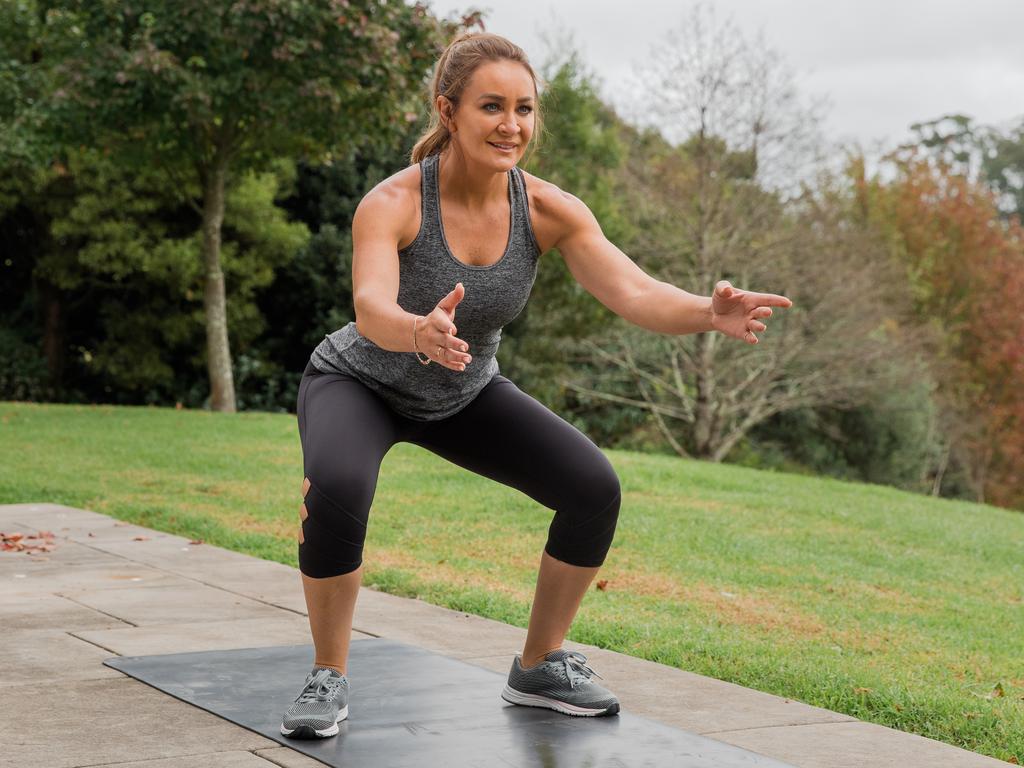The fitness anti-ageing secret - cycling can add years to your life
Regular pedalling helps to prevent one of the key causes of mobility loss and ill health, the experts tell Peta Bee.

MIDLIFE cyclists will tell you there are many good reasons for getting on a bike - not least that it makes you healthier, slimmer and won’t wear out your knees like running. But even the army of Lycra-clad diehards might be surprised to learn that spending time on two wheels can have such a potent anti-ageing effect. One of the first studies to look at how recreational cycling affects the muscles has thrown up some startling statistics and shown that it dramatically improves the health of an ageing body, potentially adding years to your life.
Cycling remains one of the most popular forms of exercise in the UK, with about 10 per cent of people getting on a bike at least once a week and 13 per cent cycling once a month. To date, most studies on its physiological effects have focused heavily on either the cardiovascular benefits for overweight people or on specific performance-related muscle changes in elite cyclists. Evidence that it might help to slow at least one aspect of ageing came in a study from the Institute for Inflammation and Ageing at Birmingham University five years ago.
Immune cell biologists there showed that committed cyclists - men who could ride 100km in under 6.5 hours and women who could cover 60km in 5.5 hours - aged 55 to 79 had much more youthful immune systems than sedentary people. Normally the thymus that produces infection-fighting T-cells shrinks and becomes less efficient with age, but lifelong cyclists appeared to have thymus glands capable of making as many T-cells as young healthy people.
What was lacking, says Professor Alister Hart, the consultant orthopaedic hip surgeon at the Royal National Orthopaedic Hospital, who led the new trial, were studies exploring the effects on muscle health in everyday recreational cyclists. “It is an area that is so important since the weakening of muscles with age - known as sarcopenia - is one of the key causes of mobility loss and ill health in older adults,” he says. “We wanted to see if cycling helped to prevent it and has another sort of protective effect against ageing.”

To do this, Hart and his colleagues recruited 28 committed male recreational cyclists, with an average age of 49, who had routinely clocked up more than 4,349 miles, equivalent to an eight-mile daily commute to and from work on Monday to Friday, or longer more ad hoc rides including at weekends, each week over the last year - and had been cycling regularly for about 15 years on average. “They were a very long way from being elite but were enthusiastic,” he says. “In fitness terms they’d be on a par with people who train for 10km, half marathons or marathon events for fun.” A control group of 28 self-declared “couch potatoes” was sourced via the Office for Health Improvement and Disparities’ couch to 5km program. Those in the “inactive” group had been doing less than one hour of exercise a week and had not played any sports for an average of 27 years.
Part of the inspiration for the study came from Hart’s own experiences. A keen runner, he had completed marathons before taking up cycling four years ago. “Like a lot of people I increased the amount of cycling I did during the pandemic lockdowns and it became really apparent to me that it’s an activity that heavily recruits large muscle groups,” he says. “I wanted to see precisely if and how cycling changes muscle composition and whether we could provide any clearer insights into how people can live well for longer.” Using specially developed technologies that apply artificial intelligence to the MRI process, he was able to build a complete and detailed picture of the muscle make-up of every participant.
“Muscle analysis used to be a laborious and time-consuming process that took two days per person to complete, which meant it was rarely used for recreational exercisers,” Hart says. “Yet the refined automated MRI method we have developed gives us muscle fat readings within ten minutes, which makes it much easier to test larger samples.”
What they were looking for was the percentage of fat within two muscles - the gluteus maximus and gluteus medius - situated in and around the buttocks. Both are heavily engaged in cycling but more importantly play a key role in supporting the human body in everyday movement. “These are the walking muscles,” says co-author Johann Henckel, an orthopaedic surgeon. “They are the muscles that allow for human locomotion and are essential for holding the pelvis upright so that we can move.”
With inactivity, obesity and age, muscle all over the body becomes more marbled with fat. “We don’t yet fully understand whether muscle turns to fat or whether fat infiltrates muscle in some other way,” Henckel says. “But we do know that excess amounts of fat infiltration can be harmful to health.”

High levels of fat in muscles also makes them weaker and their accumulation over time is thought to be an important factor in the acceleration of sarcopenia or age-related muscle loss. Your muscle mass can decrease by about 3-8 per cent a decade after 30, and even more after 60. It’s not just that diminished muscle mass leaves you with bingo wings and love handles that makes it unpleasant, but the fact that it is associated with raised blood lipid levels and visceral fat that clings dangerously round your internal organs. Sarcopenia and intramuscular fat have been associated with conditions such as type 2 diabetes, obesity and heart disease as well as a greater propensity for fractures and falls. Lifting weights is known to help to slow the process, but could cycling do the same?
Results of the study, published this month in the journal BMC Musculoskeletal Disorders, show how the effects of regular pedalling on midlife muscles can be profound. Not only were the cyclists’ glute muscles larger and stronger, as might be expected, but they displayed distinctly lower levels of harmful fat settling between the fibres.
“We found the cyclists had much lower levels of fat infiltration of their muscles and greater muscle mass than the inactive individuals of the same age,” Hart says. “These lower levels of fat infiltration into the gluteus maximus and medius muscles are a valuable marker of muscle health, good mobility and healthy hips, that tend to decline with age.” On average, the gluteus maximus muscles of the inactive participants had a 21.6 per cent fat infiltration level whereas in the cyclists it was just 14.8 per cent. With the gluteus medius muscle, there was a 16 per cent fat infiltration in the muscles of the sedentary participants compared with just 11.4 per cent in the cyclists.
Hart describes the new findings as groundbreaking. “We now have clear evidence that cycling is a great way to stay physically healthy for longer,” he says. “It helps to maintain muscles and prevent them from being weakened by fat infiltration, delaying some of the effects of ageing.”
A study to be published shortly will compare the effects of cycling on the muscles of men and women to see if the response is in any way different. In the meantime, his message to those who regularly spin on two wheels is to keep it up. And to those who have left their bike languishing in the shed for too long it is “most definitely to get back in the saddle this spring”.
WHAT MIDDLE-AGED CYCLISTS NEED TO KNOW
1. Select the right saddle
The worst thing you can do is to buy a saddle on looks alone. A poor-fitting saddle can place pressure on the pudendal nerve and arteries in the pelvic floor and perineum, causing pain and numbness.
“If you are going to cycle regularly you need to go through a diagnostic process at a specialist bike shop to find one that suits you,” says Phil Cavell, founder of the cycling biomechanics and analysis organisation Cyclefit and author of The Midlife Cyclist (Bloomsbury). “And there is no such thing as ‘breaking in a new saddle’ - it either works for your pelvis construction or it doesn’t and you will know when it is the right one.”
2. Set your saddle position carefully
Incidence of saddle pressure pain increases with age and is highest among the over-50s. A saddle that is too far back or too high can cause Achilles tendon problems and iliotibial band syndrome, a pain caused by inflamed fascia and normally felt on the outside of the knee. “A saddle should never be nose up,” Cavell says. “I recommend 0 to minus 2 degrees of nose down for men and 0 to minus 4 degrees nose down for women.”
3. Consider your handlebar position
How your handlebars are set is largely determined by the strength and flexibility of your hamstrings, lower back, thoracic spine, shoulders, neck and arms, says Phil Burt, former lead physiotherapist at British Cycling and author of Bike Fit (Bloomsbury).
“The recommended torso angle for a recreational cyclist is 45-55 degrees,” Burt says. “This will allow a relaxed riding position and a comfortable reach.”
4. Cycle less if you have back pain
Lower back pain is common among cyclists, Burt says, and if you have eliminated equipment-related issues such as saddle height, it might be worth reducing the load or intensity of your cycling, particularly if you have just taken it up again.
“Sudden increases in distances or intensity of terrain, such as climbing long hills, might be the reason for back pain,” he says. “Consider stepping back a little and building up more slowly.”
5. Stretch your hamstrings, hips and glutes
Many midlife cyclists neglect stretching and strength exercises at their peril, Burt says. It is particularly important to stretch regularly if you spend much of your time at a desk or driving.
“All that time spent in a leaning forward seated position is compounded by the hours you then spend on your bike in a similar position,” he says. “It can lead to tight hip flexor muscles, which causes increasing discomfort on and off the bike.” Tight hamstrings are common “because the knee doesn’t typically extend beyond 35 degrees at the bottom of a pedal stroke and the muscle becomes restricted” and if glutes, the powerhouse muscles of cycling, become restricted in range of movement, your cycling will be affected. Stretch, use a foam roller and do mobility exercises for 30 minutes three to four times a week.
“The more you can do of this kind of work, the better,” Burt says. “But if all you can do is a few moves daily it is better than nothing.”
The Times




To join the conversation, please log in. Don't have an account? Register
Join the conversation, you are commenting as Logout